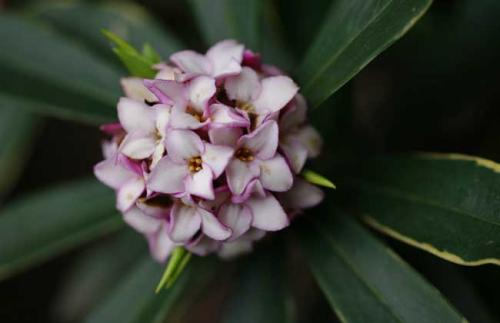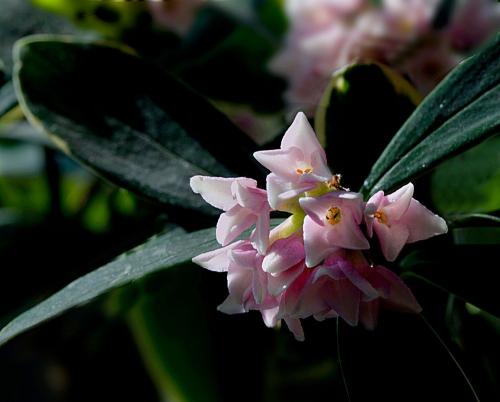Culture method of Lycoris radiata
1. Soil
Lycoris chinensis is highly applicable to soil, and it is best to cultivate it in sandy soil rich in humus and loose air, so that the plant will be more luxuriant.
two。 Light
Lycoris grandiflora needs sufficient light, but full-day or half-day conditions are suitable for its growth, and plants without sunlight will affect flowering.

3. Temperature
Lycoris baihua likes a warm environment, and the suitable growth temperature is 15-25 ℃. If you plant it, it should be warm in winter and spring.
4. Moisture content
Lycoris grandiflora needs to be watered thoroughly after planting to keep the soil moist and provide sufficient moisture for the plant to grow. Replenish water in time if the soil surface is gray and white.
Culture method of Lycoris radiata
Temperature of culture method of Lycoris radiata
Lycoris baihua is suitable for cultivation in flat land, and the suitable temperature for growth is between 15 and 25 degrees Celsius. It is more suitable to be planted in the north, preferably in winter and spring.
Light
Lycoris likes to grow in sufficient light, can grow in full or half-day light, when the light is not enough, it will make the plant blossom badly.
Soil
Lycoris baihua does not have high requirements for soil, but it is best to grow in sandy loam or loam rich in humus and good drainage, which can make the plant flowers and branches luxuriant and become more beautiful.
Fertilizer application
Sufficient organic fertilizer can be buried before planting Lycoris radiata, and then topdressing is carried out every two months. Topdressing can use self-made mature compost, we should pay attention to the proportion of phosphorus and potassium fertilizer, so as to effectively promote the development and flowering of bulbs.
Watering
The plant should be watered thoroughly after cultivation, and should be watered frequently during the growing period to keep the soil moist, but not stagnant water to prevent the bulb from rotting. When the soil surface is dry and gray-white, it is necessary to replenish water in time and provide sufficient water before flowering to the flowering stage.
How to raise white onion orchids, breeding methods and matters needing attention of white onion orchids
White onion orchid belongs to the perennial evergreen bulb flower of Amaryllidaceae, which is native to Mexico and South America and is widely cultivated in China. White onion orchid is suitable for planting in flower diameter and grass clumps, at the same time, pot planting is the best for indoor viewing. So, let's learn about how to raise white onion orchids, the breeding methods and matters needing attention.
How to raise white onion orchids, the breeding methods and matters needing attention:
1. Growth habits: White onion orchid plants like sufficient sunlight, tolerance to semi-shade and low humidity, and are suitable for planting in the growth environment of fertile soil, water and fertilizer conservation, clayey soil and good drainage, which is more conducive to the growth and flowering of white onion orchid plants.
2, temperature: White onion orchid plants in the summer high temperature season, the growth temperature should be maintained below 35 ℃, this is more conducive to the growth of white onion orchid plants; white onion orchid plant winter growth temperature should be above 10 ℃, otherwise, white onion orchid plants will stop growing, at the same time, there will be frost phenomenon, resulting in plants can not safely survive the winter.
3. Fertilizer and water management: White onion orchid plants have relatively high requirements for fertilizer and water, but growers should not irrigate fertilizer and water indiscriminately. They should follow the principles of "light fertilizer applied frequently, less and more times, complete nutrition" and "dry and wet, dry and dry." the principle of "watering" should keep the leaves and flowers of the plant dry after fertilization. In the vigorous growing season, white onion orchid plants need to apply dilute liquid fertilizer every half a month.
The above is how to raise the white onion orchid, the breeding methods and matters needing attention, the growers should maintain the plants according to the above breeding methods, which can improve the ornamental value of the white onion orchid plant and make the white onion orchid plant bloom more beautiful.
- Prev

Culture methods and matters needing attention of Daphne odorifera in Phnom Penh
First, the size of the flowerpot selected by the pot soil should be moderate, and the soil should be selected with decaying and acidic soil, which is beneficial to the growth of Phnom Penh Daphne. Second, change the pot of Phnom Penh Daphne generally after 2 years, so that Phnom Penh Daphne can produce beautiful flowers and promote the growth of Phnom Penh Daphne.
- Next

Maintenance measures of Daphne odorifera in Phnom Penh
1, soil Phnom Penh Daphne soil to choose those loose, fertile and breathable soil, in general, the soil also needs to contain acidic substances. 2. light Phnom Penh Daphne is a shade-loving plant, so it is not appropriate to over-illuminate Phnom Penh Daphne, but it is also necessary to give moderate illumination to Phnom Penh Daphne.
Related
- Fuxing push coffee new agricultural production and marketing class: lack of small-scale processing plants
- Jujube rice field leisure farm deep ploughing Yilan for five years to create a space for organic food and play
- Nongyu Farm-A trial of organic papaya for brave women with advanced technology
- Four points for attention in the prevention and control of diseases and insect pests of edible fungi
- How to add nutrient solution to Edible Fungi
- Is there any good way to control edible fungus mites?
- Open Inoculation Technology of Edible Fungi
- Is there any clever way to use fertilizer for edible fungus in winter?
- What agents are used to kill the pathogens of edible fungi in the mushroom shed?
- Rapid drying of Edible Fungi

